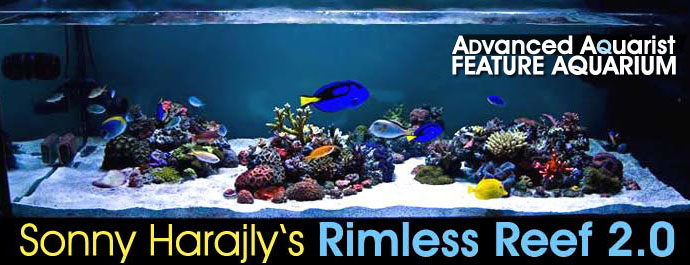
I like to call my reef setup “living art”. Many outside of this hobby would view our obsession as simply “fish in a glass box”. But, to the avid and discernable hobbyist, we see a form of living art. I call what we produce living art because I view each hobbyist as an artist. We plan out our setups mentally, and then go forth to produce great extensions of our visions. While there may be millions of aquariums in the world, none are the same. Each aquarium is as different as the aquarist. Some of us like SPS, while others may prefer LPS or soft coral. Some aquarist may go as far as mixing all three with splendid results.
The beauty of this hobby is that there are many roads to success. Today we have methods that range from the Berlin Method, Ultra Low Nutrient, Turf Scrubber, and Probiotic. From all of these methods and philosophies come successes. In almost every category of maintenance, we find great examples of success.
I like to take the best of each method and incorporate it into my systems. I have a sandbed, minimal live rock, heavy skimming, and employ probiotics. I have found probiotics to be the greatest aid to my success in maintaining healthy and vibrant setups.
Philosophy & Design
 When designing this aquarium, I had openness and negative space as my top priority. This aesthetically looks better, and allows for a more natural and pleasant display. All too often reefers are quick to stack massive amounts of rock and corals into an aquarium. This in turn gives the display the appearance of a fruit stand, and it is much too cluttered and busy. By allowing the corals a large area to grow, you will be rewarded with natural growth patterns and a better looking display.
When designing this aquarium, I had openness and negative space as my top priority. This aesthetically looks better, and allows for a more natural and pleasant display. All too often reefers are quick to stack massive amounts of rock and corals into an aquarium. This in turn gives the display the appearance of a fruit stand, and it is much too cluttered and busy. By allowing the corals a large area to grow, you will be rewarded with natural growth patterns and a better looking display.
The second major benefit of an open display was the ability to manage flow. With an open design, I was able to use less powerheads and create the optimal flow conditions for the corals. The open plan also allows for the removal of detritus with ease. With water being able to flow in and around the structures, waste is easily exported to the sump. Whatever detritus that has settled can then be siphoned out.
While the setup is young, it will look great once it has completely grown out.
http://www.youtube.com/watch?v=aTNH7cnFxAs&feature=channel_video_title
Tank Specifications
Display Tank:
- 72″x36″x22″ Rimless
- 246 gallons from http://www.miraclesaquariums.com/
- 2 Sided Starphire glass(Front)
- Right Side External coast to coast Overflow with 1″ return and two 1.5″ drain
- 3/4″ glass all around
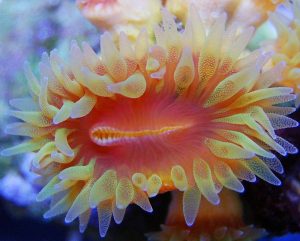
- Stand: The stan is hand built and tiled with slate. No equipment is under the tank. The sump and all equipment are located in the room directly to the right of the tank. The stand is lower to the ground this time around, allowing for a perfect view when seated. The tank has its own special area with everything designed around it.
Water Movement:
- 3x250W Metal Halide utilizing XM 20K bulbs
- Two Ice cap ballasts, and one PHO ballast for the center bulb.
Sump: Nothing fancy. I use is simple 150gl Rubbermaid tub.
Skimmer: Deltec AP851. I have had this skimmer on three different setups and for 6 years now. It does an amazing job!
Calcium and Alk Addition: Randy’s Two Part Solution. I ran both a CA reactor and Kalk Stirrer in the past and honestly have had better results will a simple DIY two part solution. I dose the solutions manually, an hour apart.
Substrate: 60lbs of CaribSea Seaflor Special Grade Reef Sand
Probiotics
When I first setup my previous 100gl rimless tank I had been adding Microbacter7 from Brightwell aquatics. While this helps the tank I wasn’t all that impressed. It wasn’t until I started dosing vodka that things really took off. Within a month of dosing vodka I no longer had to use GFO. Within 3 months I actually had to add Amino Acids and feed the tank more as it had become “too clean””. The corals had lightened up and actually stopped growing. After cutting back a bit on the vodka dosage and adding more food the corals once again took off.
While I was happy with the results of dosing vodka, I ran into a few issues. The number one issue I ran into was red slime, or cyano. The cyano would rear its ugly head every four months or so. While it did not affect the corals, it did smother the sandbed and take away from the overall aesthetics of the aquarium. After some research, it turns out that the cyano was appearing due to the vodka breaking the saturation point of available carbon in the system. The excess carbon could not be taken up by the beneficial bacteria present in the system, and thus the opportunistic cyano would creep in.
With this in mind I decided to change things up when setting up Rimless Reef 2. While Biopellets had been on the market for over a year, they had not been thoroughly tested at the time. Being the mad scientist that I am, I decided to give the Biopellets a shot. From what I understand, the pellets provide a constant carbon source for the bacteria, while NOT breaching the saturation point of carbon. What you end up with is a continuous supply of carbon without the worry of a cyano breakout or daily dosing.
The first 4-6 weeks of running the pellets were a bit rough. This was expected, and I weathered the storm. During the break in period after introducing the pellets into my system I dealt with all sorts of minor issues. I had a very large outbreak of diatoms, followed by an equally large outbreak of red cyano. Around the 6 week mark the cyano disappeared almost over night. What I am now left with is a clean and healthy sandbed, low nutrients, and the luxury of going 7-10 days without having to clean the viewing panes of the aquarium.
Filtration
 In addition to probiotics, I run a simple yet effective filtration system. I have a Deltec AP851 as a skimmer, run carbon and use filter socks. The skimmer has been running for close to 6 years on numerous systems. The amount of waste that this thing pulls out never ceases to amaze me.
In addition to probiotics, I run a simple yet effective filtration system. I have a Deltec AP851 as a skimmer, run carbon and use filter socks. The skimmer has been running for close to 6 years on numerous systems. The amount of waste that this thing pulls out never ceases to amaze me.
As for chemical filtration, I run carbon 24/7 in a Phosban reactor. The carbon is changed out about once every month. I find that the benefits of carbon far outweigh any issues others may complain about. With all of the household fragrances, chemicals, and cleaners in the air it’s a good idea to run carbon. Another good reason to run carbon is that it aids in offsetting any chemical warfare conducted by opposing corals. For those of us with mixed reefs, maintaining a proper balance and equilibrium is key. .
The filter socks are change every two days, and washed in bleach. I then allow the socks to air dry, thus neutralizing any residual chlorine. The sock are great at collecting free floating detritus, and they aid is combating micro bubble issues in the display.
Water changes are done about once a month. I do not like doing large water changes, as I feel that it can do more harm than good. Through trial and error, I have found a sweet spot of 30gls a month. This amount of water changed every month works for me, but may not work for others. The comparatively lower percentage of water changed is likely due to the effects of probiotics. I am not an expert on the matter, but I feel that the larger water changes were removing large amounts of beneficial bacteria. Until I see a reason to do so, I will continue with these lower percentage water changes.
My back room is very simple, consisting of a Rubbermaid 150gl tub which acts as a sump. The skimmer and system siphon and drain into this single tub. I like to keep my systems and plumbing simple, so I am sorry that I cannot provide more detailed configurations or specs.
Flow
Of all the factors in maintaining a successful reef aquarium, flow is on the top of my list. Proper flow can make or break a system. Continuous flow is required in order to feed the corals, as well as carry away waste that the corals expel. Without the proper flow, the corals will suffer; leading to a decline is health and coloration. As a general rule of thumb, I like to have the polyps of the corals swaying every 3-4 seconds. I often tell fellow reefers to concentrate on the individual coral, and not the total system turnover.
When it comes to proper flow, its all about the positioning of the pumps and rockwork. Many reefers build up these huge walls of rock, which absolutely skill flow. I on the other hand decided that a more open plan would be best. I only have a MP40,MP20, and a tunze 6065. My Ehiem 1262 return maybe only gets 4-500gph after head loss and such. So, you can see that its all about how you position things. When the pumps turn on, the flow doesn’t look like much in the tank. But, after 10 minutes the water starts to move and really build momentum and channel around the islands, almost like a gyre system. This is precisely why I have the islands placed and built as they are. The canyons help to channel the flow to where I would like it.
Eventually when the corals get to a certain size I will need to increase the flow. When that time comes I plan on getting a vortech MP60, so that I can have all of the pumps on only one side of the tank.
Lighting
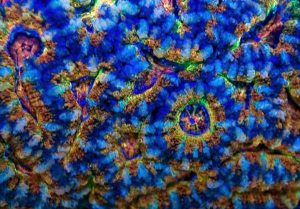 Well, if you have read this far you will know that I like to keep things simple. It is my firm belief that less is more, especially when it comes to reef systems. While my lighting system may not be the most extravagant, you cannot argue with the results. I ran T5’s for a couple years on my previous 100gl Rimless Reef. I loved the T5’s and the colors that they produced. I had the full intention of running T5’s on this setup, but things got complicated. My wife and I found out that we were expecting a baby shortly after ordering the aquarium. Not to long after that we found out that my wife was in fact having twins. So with this great news in mind, I knew that I would have to scale back on certain parts of the new reef. I no longer could justify an expensive LED or T5 fixture to place over the tank. I did however have three Lumenarc mini’s handy, along with new bulbs and ballasts.
Well, if you have read this far you will know that I like to keep things simple. It is my firm belief that less is more, especially when it comes to reef systems. While my lighting system may not be the most extravagant, you cannot argue with the results. I ran T5’s for a couple years on my previous 100gl Rimless Reef. I loved the T5’s and the colors that they produced. I had the full intention of running T5’s on this setup, but things got complicated. My wife and I found out that we were expecting a baby shortly after ordering the aquarium. Not to long after that we found out that my wife was in fact having twins. So with this great news in mind, I knew that I would have to scale back on certain parts of the new reef. I no longer could justify an expensive LED or T5 fixture to place over the tank. I did however have three Lumenarc mini’s handy, along with new bulbs and ballasts.
I proceeded to place the metal halides over the system, and they have turned out great. The color of the XM20K bulbs is perfect, and my corals love it. I do have 4x54W T5’s ready to be added, but I just need to find time to build a fixture to hold them over the aquarium. I run three Lumenarc Mini’s, with 250w XM 20K bulbs. Each reflector is placed over a boomie, allowing for maximum usage of lighting. I wanted to utilize as much open area and negative space as possible in this system, so the less light that is hitting the sand the better.
I have had my eye on my many new LED fixtures hitting the market. But, I think that it will be some time before I am able to hang one over my display. I have two wonderful baby boys on the way, so ill have to hold back on the excesses, at least for now.
Supplements
While I don’t dose too many additives, I do follow a strict dosing regiment. I dose Lugol’s Solution in order to bring out the blues in my SPS. I have dosed it for about 6 years now with great results. I started dosing Strontium a couple years ago. I did notice some positive effects in my corals so I continue to dose it.
The KZ Coral Snow is a recent addition. I have been now dosing it for about two months. This additive helps to neutralize undesirable acids and slime, along with clarifying the aquarium water. The agents that the solution binds are then exported via the protein skimmer.
Below is a full list of additives and dosing schedule:
- Carbon in a Phosban 150 reactor
- Microbackter7
- BRS Biopellets
- Lugol’s Solution
- Reef Crystals Salt
- Seachem Strontium
- KZ Coral Snow
Daily:
- CA: 110ML
- ALK: 110ML
- Strontium: 1 Teaspoon
- Lugols: 1 drop
- MB7: 14 drops
- KZ Corals Snow 5ml
Weekly:
- MG: 110ML
Monthly:
Livestock
Fish
- Pacific Blue Tang (10 years under my care)
- Two smaller Pacific Blue Tangs

- Powder Blue Tang
- Sohal Tang
- Yellow Tang
- Four Lyretail Anthais
- Bartlett Anthais
- Black Cap Balast
- Royal Garrama
- Oci Clownfish Pair
- Five Blue-Green Chromis
Corals
The tank is SPS dominated, no chalices or small freaky colored corals here. With the SPS I have large acan colonies, some with 50+ heads, along with assorted Zoas. The soft stuff makes for a nice filler towards the bottom. I will not have any corals on the sand, and I try and utilize negative space to the extreme.
Acropora
- ORA Pearl berry
- ORA Red Planet
- ORA Blue Voodoo
- ORA Turquoise stag
- ORA Aussie Delicate
- ORA Chip’s Acro
- ORA Nathans Green Millie
- ORA Tri-color Staghorn
- ORA Tri-color Valida
- ORA Marshall Islands Blue Bottlebrush
- ORA Blue Tort
- ORA Green Stylophora
- ORA Green Birds nest
- ORA Pink Birds nest
- ORA German Blue Acro
- ORA Green Bali Slimer
- ORA Joe the Coral
- ORA Hawkins Blue
- ORA Miami Orchid
- Blue and Busy Acro
- Red Milli
- Sonny’s Sunset Mille
- Yellow Tort
- PC Sunrise Acro Table
- Purple Monster
- Unknown Deepwater acro
- Green Slimmer
- Sonny’s Blue Slimmer
- Elias stag
- GARF Purple Bonsai
- Deswali tabling acro
- 30,000 Leagues Lokani
- Lime Green Lokani
- Tyree Pink Lemonade
- ATL Strawberry fields
- ATL Pink Tulips acro
- Palmers Blue Mille
- Blue Turaki acro
- Random Blue Stag
- Aussie Blue Table Acro
- PC Superman Table Acro
- PC Super Blue Hoeki
Montipora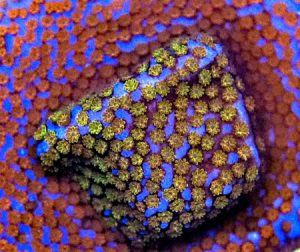
- Orange cap
- Idaho Grape
- Pokerstar Monti
- SupermanMonti
- Superman Digi
- Green Digi
- Orange Digi
- M. Setosa
- Sunset Monti
- Mystic Undata
- Tyree Undata
Acanthastrea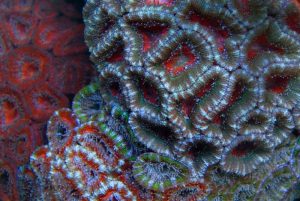
- Rainbow, orange, green, red, etc..
- Multicolored acan’s
- Multicolored Chalice
- Red Favia with green base
- Red Rings of fire Lobo
Zoanthids
- Rasta
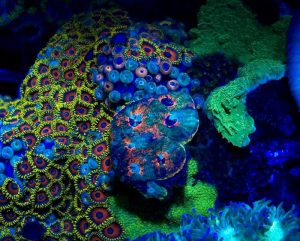
- King Midas
- African Blue’s
- Tubs Blue
- Watermelon
- Green Bay Packers
- Assorted colors
- Purple Hornets
- Blue Hornets
- Candy Apple Reds
- Gobstoppers
- Carlito Alien Eyes
Clams
- Large Tuamatu Maxima Clam
- Two Blue Maximas
- Gold Teardrop Maxima
- Derasa
Thanks
Id like to thank every here at Advanced Aquarist for allowing me to share my passion and work. I can’t wait for what new and exciting developments this wonderful hobby holds. Ill be posting updates on my setup from time to time, so please be sure to follow @ my blog www.RimlessReef.com and at Youtube http://www.youtube.com/user/SonnyM63
Sonny Harajly
Sonny’s Past Aquariums
The Rimless Reef 1 (100 gallon) and In-Wall 225 gallon Reef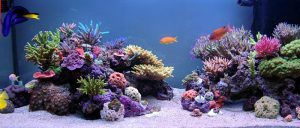


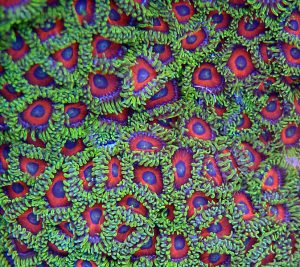
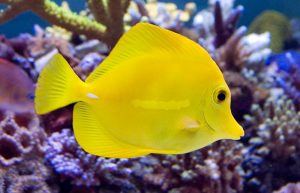
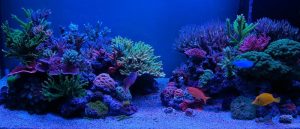
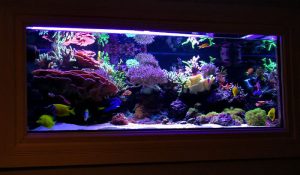

0 Comments